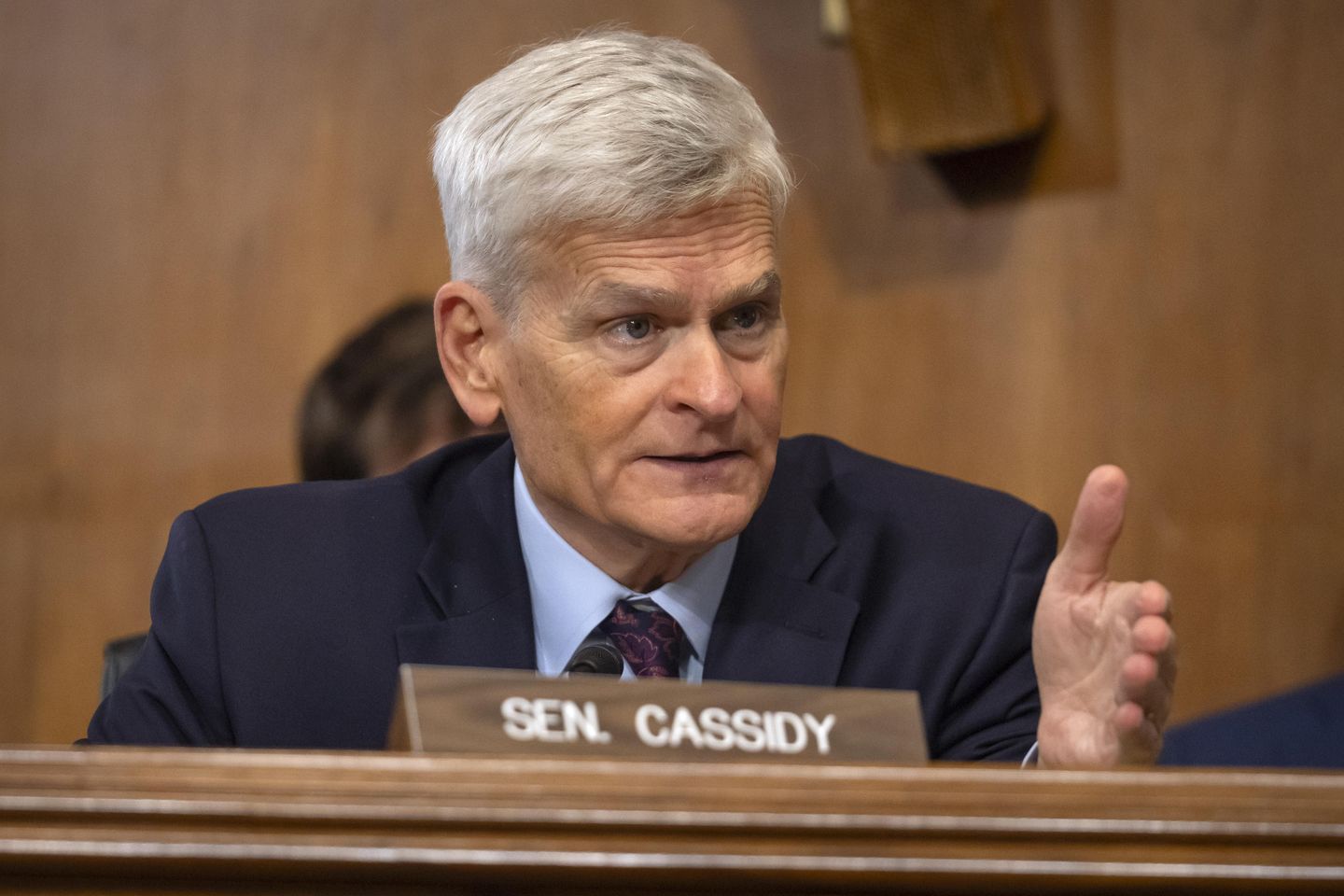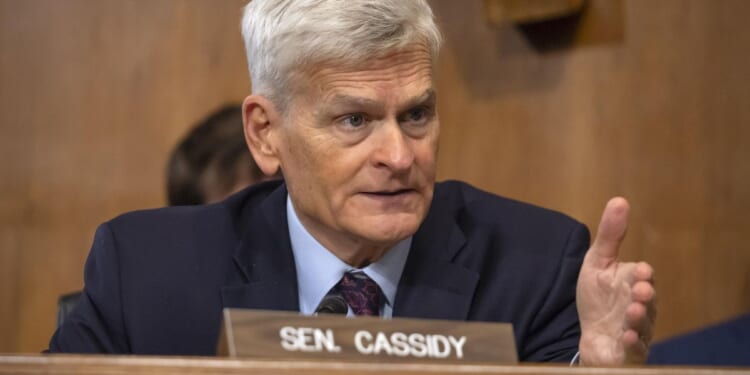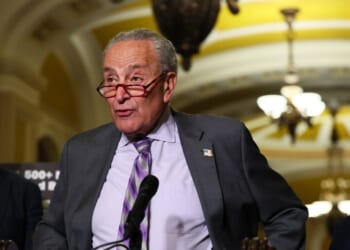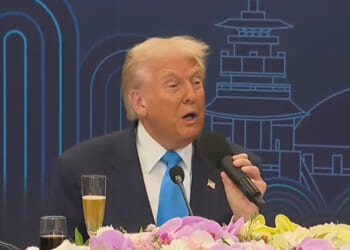
Sen. Bill Cassidy, one of the Republicans leading negotiations on a plan to lower health care costs, said he and President Trump are “totally in sync” on wanting to give financial power to the patient instead of insurance companies.
Mr. Cassidy of Louisiana chairs the Senate Health, Education, Labor and Pensions Committee and is a member of the Senate Finance Committee, the two panels that have jurisdiction over health care.
He is proposing an alternative plan to help consumers with out-of-pocket health care costs, to counter Democrats’ proposal to extend enhanced Obamacare premium subsidies set to expire this year.
Democrats shut down the government for 43 days to press that issue, but were unsuccessful in convincing Republicans to support an extension or even negotiate until the government was reopened.
Ultimately, eight Democratic senators broke from their party and voted to reopen the government because Senate GOP leaders promised they could get a floor vote on extending the enhanced Obamacare subsidies by mid-December.
Mr. Cassidy is hoping Democrats will entertain his alternative instead. He wants to take the money the government would spend if the enhanced subsidies were extended — $23 billion in 2026, and $350 billion over 10 years, according to the Congressional Budget Office — and use it to pre-fund Health Savings Accounts, or HSAs.
HSAs are tax-exempt accounts paired with high-deductible health insurance plans. The consumer can use money from the account for co-pays and deductibles, prescription drug costs and other out-of-pocket health expenses.
“Who would not want to spend 100% of the dollars on the patient choosing the health care she wants, as opposed to 100% going to insurance companies and only 80% being spent on health care?” he told reporters Monday. “As a conservative, I love it. But I think it’s got a lot of appeal to people who are left-of-center, too.”
The “medical loss ratio” rule enacted in Obamacare requires insurers to provide rebates to consumers if they don’t spend at least 80% of their premium revenue on health care services and quality improvement. They are allowed to spend the remaining revenue on administrative costs, marketing or collect it for profit.
Mr. Cassidy’s proposal is designed to ensure that 20% of the taxpayer-funded Obamacare subsidies for premiums do not go to insurance company profits. But his plan does not help consumers pay for premiums, like the enhanced Obamacare subsidies.
Instead, the government money would be directed to HSAs to cover deductibles and other out-of-pocket costs.
Mr. Cassidy said it would incentivize many consumers to switch from Obamacare plans with higher premiums, like the benchmark silver plans, to bronze plans, which have lower premiums but higher deductibles.
He said the pre-funded HSAs should be able to offset the cost of the deductible on a bronze plan based on his own estimates, but declined to give a specific amount as he is awaiting further analysis from CBO and the Treasury and Health and Human Services Departments.
“We think that what Republicans are proposing — and hopefully Democrats join with — is actually going to be a better fit for most Americans’ budgets,” Mr. Cassidy said, noting he expects it to lower overall net costs for most consumers.
He said he’s talked to some Democrats about the proposal and they’ve been receptive to the idea, but said they want to learn more.
The merits of the idea will likely be debated during a Senate Finance Committee hearing Wednesday on rising health care costs.
President Trump has called for redirecting money the government would pay for Obamacare subsidies to the consumer, and Mr. Cassidy believes his proposal is in “total alignment” with the president’s vision.
Mr. Cassidy’s first iteration of the proposal called for putting the government money into Flexible Spending Accounts, which are not currently compatible with Obamacare plans and are more restrictive because the money does not roll over from year to year, like with HSAs.
He said he is now looking at HSAs instead because Republicans already changed the law in their One Big Beautiful Bill Act to allow HSAs to be used with bronze-level Obamacare plans.
“It’s just a simpler piece of legislation,” Mr. Cassidy said. “It can go like that, as regards to the framework of connecting the consumer-driven [HSA] with the bronze level plan.”
The senator’s plan does not get rid of the base Obamacare subsidies, known as premium tax credits, enacted in the Affordable Care Act.
But it would allow Democrats’ COVID-era expansion of the credits to expire on Dec. 31 as scheduled.
The 2021 expansion allowed people earning above 400% of the federal poverty level, currently $62,600 for a single person or $128,600 for a family of four, to qualify for the subsidies.
It also reduced the maximum out-of-pocket premium contributions for people of all income levels. Those costs range from 0% to 8.5% of household income under the enhanced subsidies.
A return to the base subsidies would raise premium contributions 2.1% to 9.96% for people earning up to 400% of the federal poverty level.
Mr. Cassidy said those above the line who would lose access to the government-set limit would still benefit from the government-funded HSAs, although they may consider an income cap on those, too.
He said a cap could land around 600%-700% of the poverty level, which is in line with tax benefits for employer-sponsored insurance.
Mr. Cassidy said he is hopeful Democrats will want to work with him on the proposal or some compromise along those lines, as he believes it’s the only way to get Mr. Trump and House Republicans on board.
“President Trump does not want to continue the enhanced premium tax credit, and he wants something in a consumer-directed account,” he said. “So anybody looking for something which actually can be signed into law has got to look at the kind of direction that President Trump has given.”
















